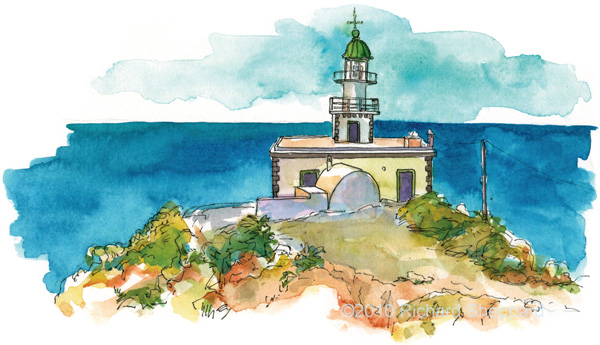(Excerpt from my book, The Artist on the Road: Impressions of Greece)
We hop into the car and drive west to the faros (lighthouse), located at the south-western tip of the island. We pull up and park just below the square base of the lighthouse with its green-domed tower pointing skyward. Built well over 100 years ago, it was originally fueled by petroleum with a lighthouse keeper attending the oil lamps and lenses, and keeping the clockwork mechanism wound. But in the 1980s, it was converted to electricity, and now an automated system handles these tasks.
Hoping for a better view, I follow a path that leads to the top of a small hill. From this perspective, the lighthouse sits at the horizon with the open sea stretching out in both directions. Small white caps rise and fall on the water animated by a breeze blowing from the west. I try to imagine the darkness the lighthouse faces every night. Being a nocturnal creature, the lighthouse is generally viewed as a warning to mariners, but beyond that, a lighthouse has an archetypal presence, and has a romantic, lonely quality that resonates deep within the human spirit. It’s as if it has its own purpose, one which keeps it searching the darkness night after night for someone lost and beyond its reach. Feeling alone and a bit lost myself, I climb back down the hill.
